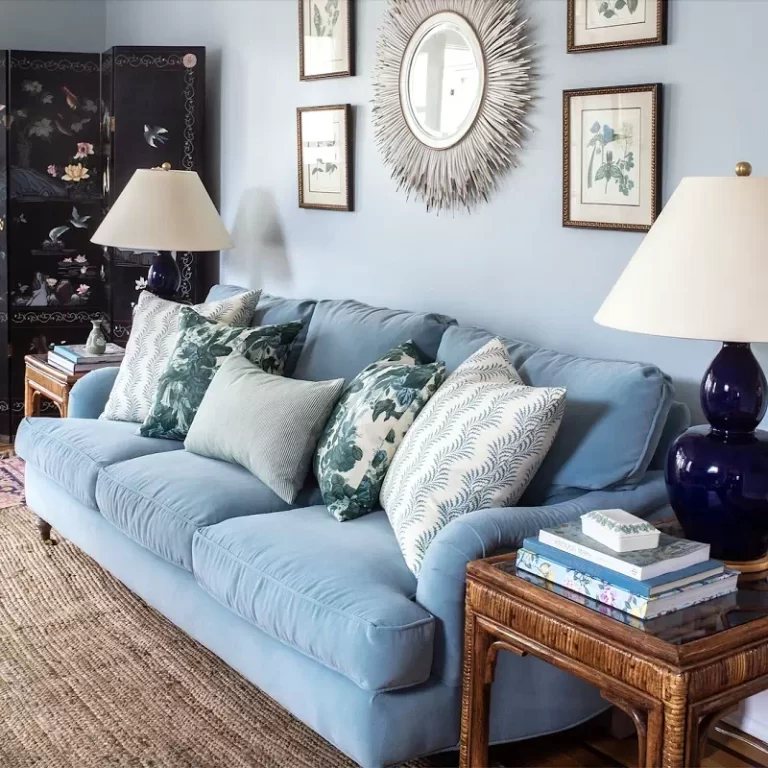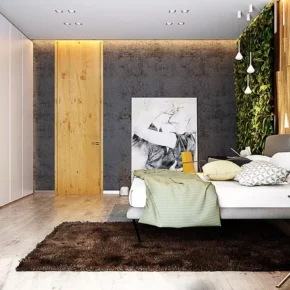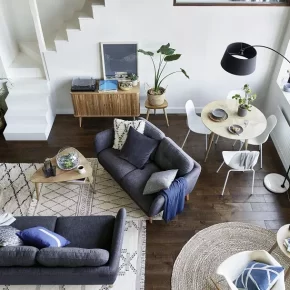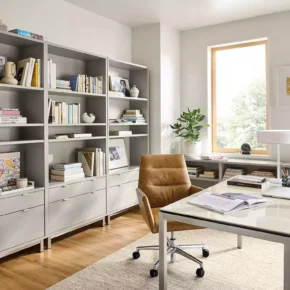Textiles are one of the most effective ways to make the interior more cozy, stylish and harmonious.
Curtains, bedspreads and pillows play an important role in creating comfort in any room. These elements help to add color, texture and warmth, and emphasize your personal style.
Choosing curtains – important tips

Curtains are one of the key decor elements that can dramatically change the look of a room. Correctly selected curtains not only decorate the interior, but also provide the necessary level of lighting and privacy.
1. Determine the style of the room
Before choosing curtains, it is important to consider the general style of the room. For a modern minimalist design, simple curtains without frills, made of natural materials, are suitable. For a classic interior, you can choose heavy curtains with rich textures, decorative elements and drapery.
2. Choose appropriate materials
The material of the curtains should correspond to the functions of the room. For example, dense fabrics that darken the room are good for the bedroom. In the living room, you can choose light, translucent fabrics that let in a lot of light, but at the same time create a feeling of coziness.
3. Color and pattern
Curtains can both harmonize with the main palette of the room and become a bright accent. If the walls of the room are of a neutral color, curtains of a bright shade or with an original pattern can become an accent that will enliven the space. However, it is worth avoiding too colorful options in small rooms, so as not to overload the interior.
4. Length of curtains
Curtains can be short or long, depending on your interior. Long curtains that touch the floor add sophistication, while short options look more informal and convenient for a kitchen or bathroom.
Bedspreads – functionality and style

Covers for a bed or a sofa are not only an element of decor, but also a practical accessory that provides comfort. Choosing a bedspread can change the ambiance of a room by adding color, texture, or even contrast.
1. Materials and textures
For the cold period, it is better to choose blankets made of soft, warm materials, such as wool or fleece. In summer, light fabrics such as cotton or linen can be preferred. Choose bedspreads that will be pleasant to the touch and match the season.
2. Shades and patterns
As with curtains, bedspreads can be an accent or addition to the overall design of a room. Choose bedspreads in shades that harmonize with the colors of the walls and furniture. Monochromatic options are suitable for minimalist interiors, while bedspreads with patterns will add dynamics and can enliven the space.
3. Functionality
The cover should be not only stylish, but also practical. It should be easy to wash and comfortable to use. In addition, consider the size of the bedspread: it should completely cover the bed or sofa, but not look bulky.
Decorative pillows are the finishing touch

Cushions are the easiest and most affordable way to add color, texture and individuality to an interior. They can be both a decorative element and serve for comfort during rest.
1. Quantity and size
The number of pillows depends on the size of your sofa or bed. Several pillows of different sizes will look harmonious on a large sofa. It is worth remembering the balance: too many pillows can look cluttered, while not enough can create a feeling of emptiness.
2. Choice of fabric
The fabric of the pillows should be pleasant to the touch and match the other textile elements in the room. You can experiment with materials: combine smooth and textured fabrics, for example, linen with velor or cotton with silk.
3. Color and design
Pillows can contrast with the general color scheme of the room or support the main tone. Bright pillows with interesting prints will become an accent in monochrome interiors, while plain pillows will emphasize the elegance of the room with a lot of details.
General recommendations for choosing textiles
- Harmony and balance
All textile elements should harmonize with each other in terms of color and style. It is important that curtains, bedspreads and pillows do not conflict with each other, but create a single image. - Seasonality
Change textiles depending on the season. In the warm season, choose light fabrics and light colors, in winter – warmer and richer options. - Quality of materials
Choose natural materials that will ensure not only an attractive appearance, but also durability. It is important that textiles are easy to care for and withstand frequent washing. - Experiment with textures
Combining different textures is the key to creating an interesting and multifaceted interior. Smooth fabrics can be combined with textured ones, creating a contrast that will give the room dynamics.
Textiles are a powerful tool that can easily change the atmosphere of any room. Choosing the right curtains, bedspreads and pillows will help make your home cozy, stylish and comfortable. Experiment with colors, textures and patterns to create an interior that matches your preferences and gives the space individuality.















